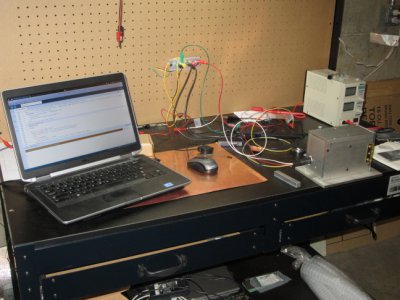- Joined
- May 27, 2016
- Messages
- 3,479
Hmm.. I think we actually agree.E = 9.613e-15 J
t = 13e-6
C = 230e-12
Q^2 = E * 2 * C
Q = sqrt(E*2*C) = 2.1e-12 coulombs
Q = i * t
i = Q/(t/2) = Q/6.5e-6 = 2.1e-12/6.5e-6 = 3.235e-7A
3.235e-7A * 1e9 nA/A = 323.5 nA = 0.3235 uA
You slipped 3 orders of magnitude. This is assuming the numbers are as you stated. If this is true, you have lots of current to play with, a veritable walk in the park!
I get the same answer as you, which is 3.235e-7A
3.235e-7A is indeed 0.3235 uA.
Moving the decimal 3 places to the right turns uA into nA
323.5nA is what I said.
It is huge, and would deliver 32.35mV from a 100K gain in the first stage
Noise from √(4 * k * T * B * R)
k = 1.380649E-23
T = 295 (about room temperature)
B = 300KHz (the pulse has that content)
R = 100K (say) for the TIA stage
Noise = 22.1uV
S/N ratio = 1463.8 => 20log(1463.8) => 63.3dB (for the 60KeV)
It's a great big fat clean signal.
------------------------------------------------------------------------------------
Now to go again, but this time for a 1.5KeV energy.
I am thinking from #885 that the S/N will be 32dB less than what we get from the big fat pulse. 63-32 = 31dB ?
That would still be a noise-free signal


